View and Update Precision Time Services
Use the Customer Portal to view the details of an Equinix Precision Time service and to make changes, including the service tier. You can also retry the modified configuration or remove the service instance altogether.
The Services section of the Fabric Precision Time Inventory lists all the Precision Time service instances that are included in a billing account, along with their provisioning status.
In the Service Inventory, click a service link to access the details page.
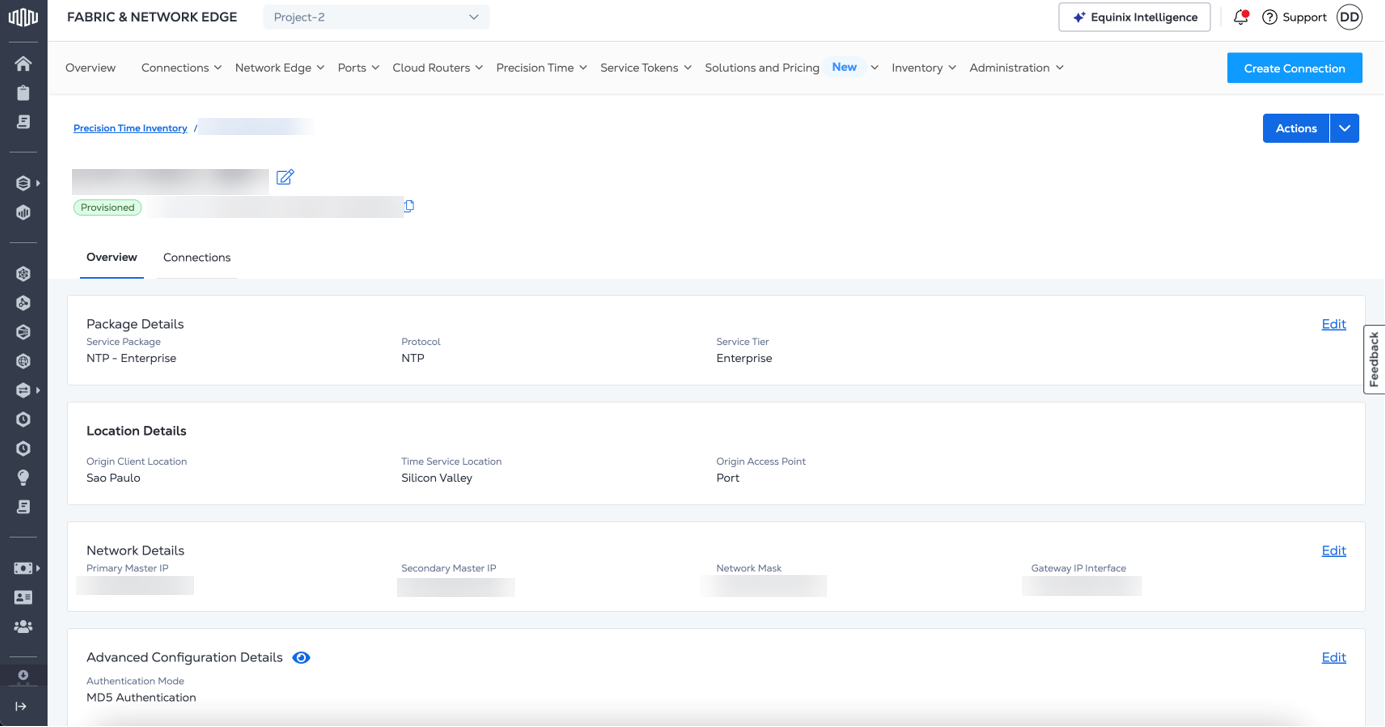
Viewing a Precision Time Service Instance
-
Sign into the Customer portal.
-
If your Fabric account has been transitioned to the Equinix Identity and Access Management (IAM) platform, use the Context Switcher
drop-down list to access your project and its assets.
-
From the Precision Time menu, click Service Inventory.

-
In the Services section, locate the service instance that you want to view.
-
Click the Service name to view the Service details. Service details include basic information about the service. You can also find details on the locations, the networking and connection settings, NTP or PTP advanced configuration details, and pricing.
-
Click Go Back at the top left of the window to return to Services.
Viewing Event Logs for Service Observability
To view observability events for a Precision Time Service instance:
-
Navigate to the asset detail page.
-
Click the Events tab.
-
Select a time or date interval from the drop-down to filter events.
The Events tab provides a comprehensive list of observability events related to the lifecycle state of the Precision Time Service, displayed within the selected time range. All portal users can access this feature without needing an observability subscription.
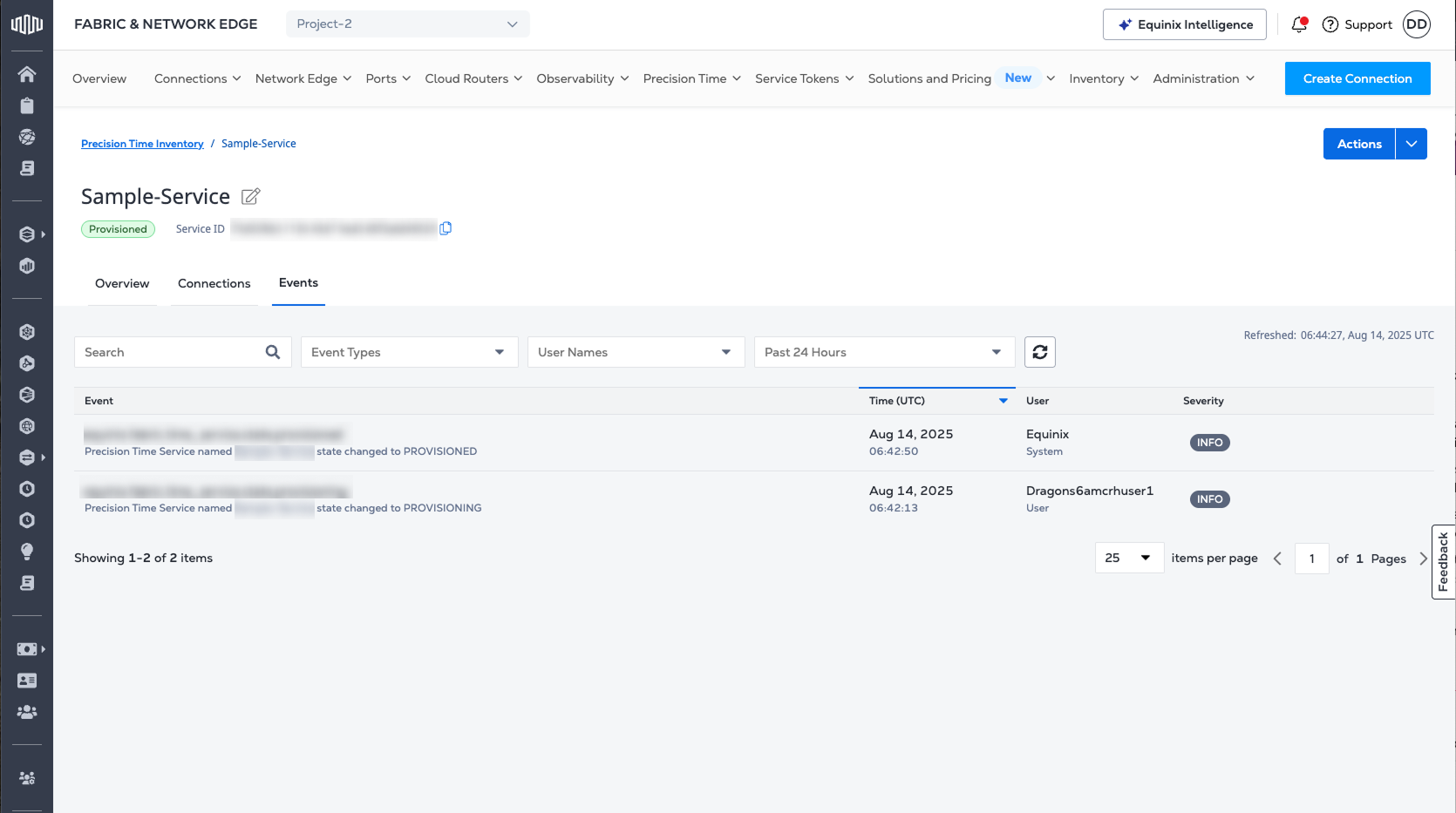
Modifying a Precision Time Service Instance
Do not replace an existing Precision Time service by deleting and creating a new service. Instead, follow these steps to update your service configuration through the Customer portal.
A service instance must be provisioned before you can change its configuration. The Services window shows an active Provisioned status for the service instances that can be modified.
Before updating a newly provisioned service, you must wait 6 hours. During this wait time, the invoice database updates its records to provide accurate pricing.
If a Precision Time service instance was created manually by an Equinix sales representative, you must contact your sales representative to change the service tier. You will not be able to change the service tier by using the Edit Service window.
-
Sign into the Customer portal.
-
If your Fabric account has been transitioned to the Equinix Identity and Access Management (IAM) platform, use the Context Switcher
drop-down list to access your project and its assets.
-
From the Precision Time menu, click Service Inventory.

-
In the Services section, locate the service instance that you want to view.
-
Click the Service name to view the Service details.
Modifying the configuration might disrupt the service. Click Continue to proceed.
Editing the Service Details
Service Name
Click the edit icon next to the service name.
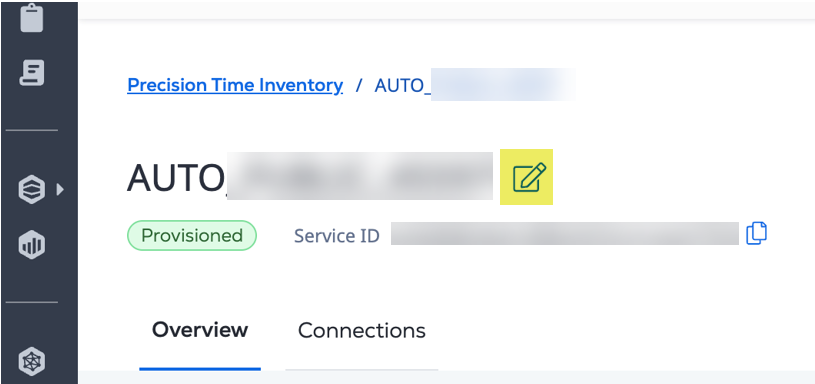
Enter a new name and click Submit
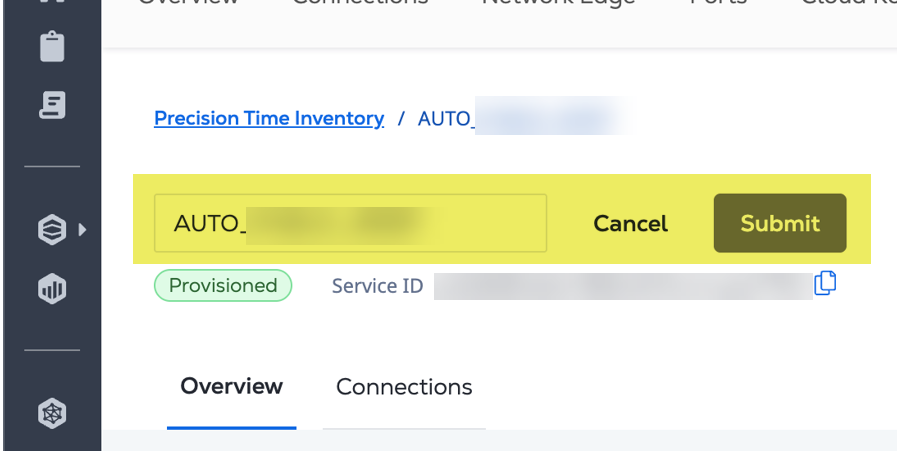
Service Package
Click Edit in the Package Details. Change the package, and then view and agree to the new price. Click Submit.
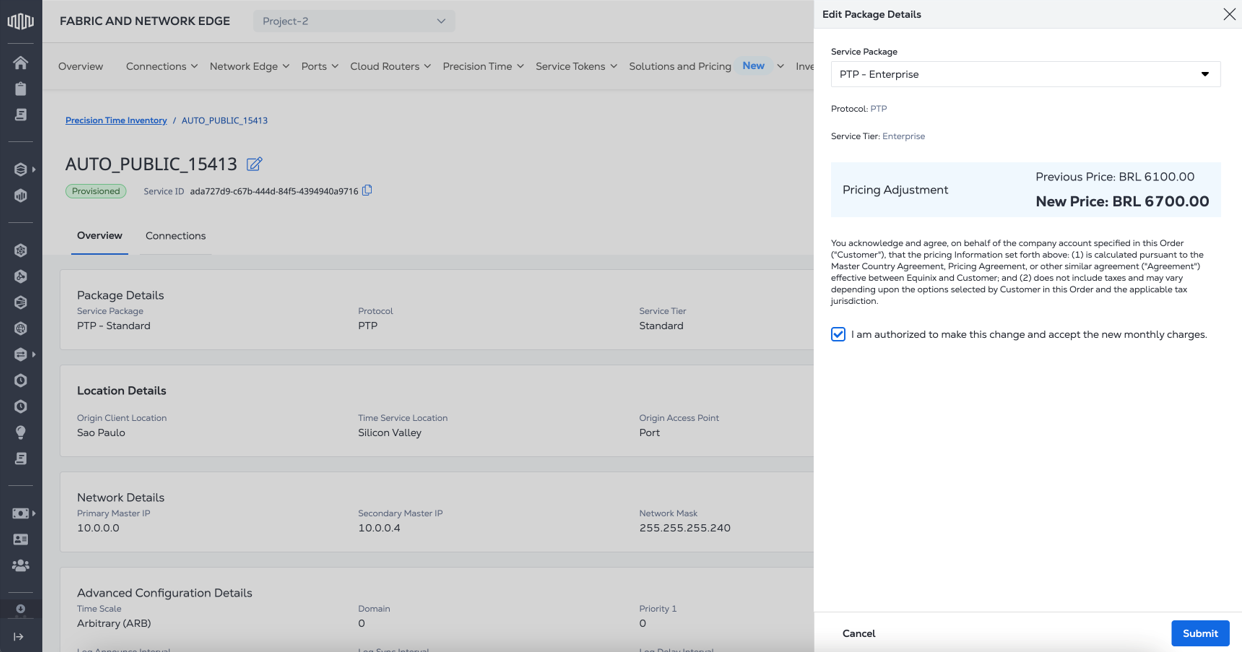
Asset Details
Click Edit in the Asset Details. Only provisioned services can be edited.

The Edit Precision Time Asset Details drawer will appear. Only eligible ports will appear based on the metro, encapsulation, previous VLAN ID and port type.

- Select the desired Port and click Next.
- The previously selected VLAN ID will be displayed.
- Click Save. The Port Connection details will be updated.
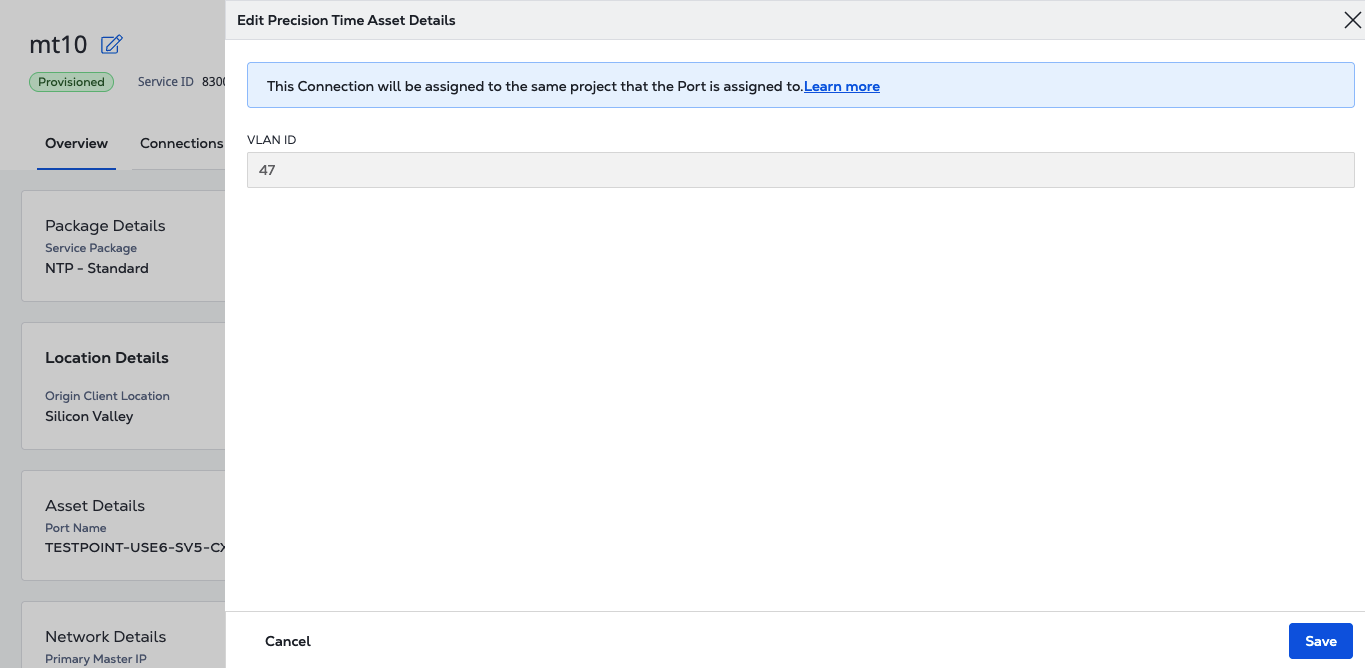
Network Details
Click Edit in the Network Details to update Primary IP, Secondary IP, Network Mask, and Gateway IP Interface.
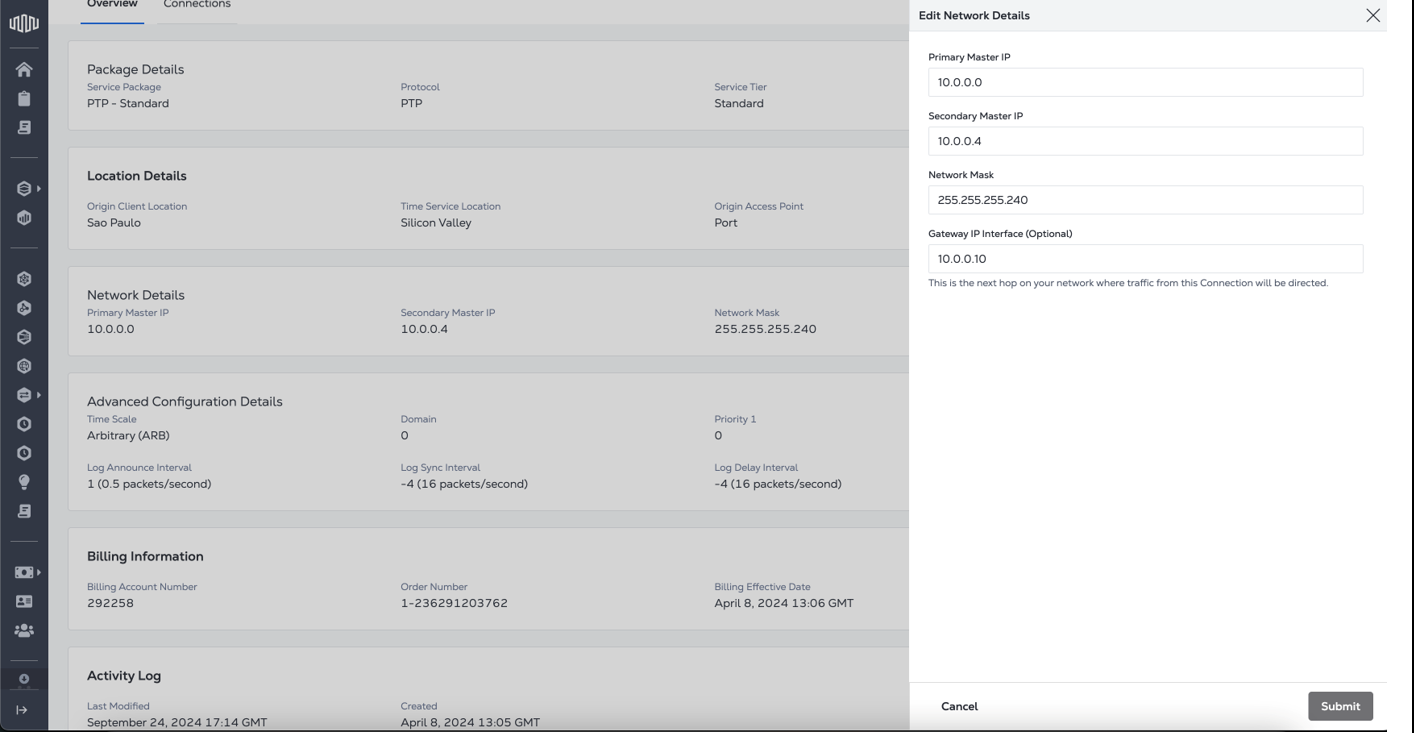
PTP Advanced Configuration Details
Click Edit in the Advanced Configuration Details to update PTP Settings.
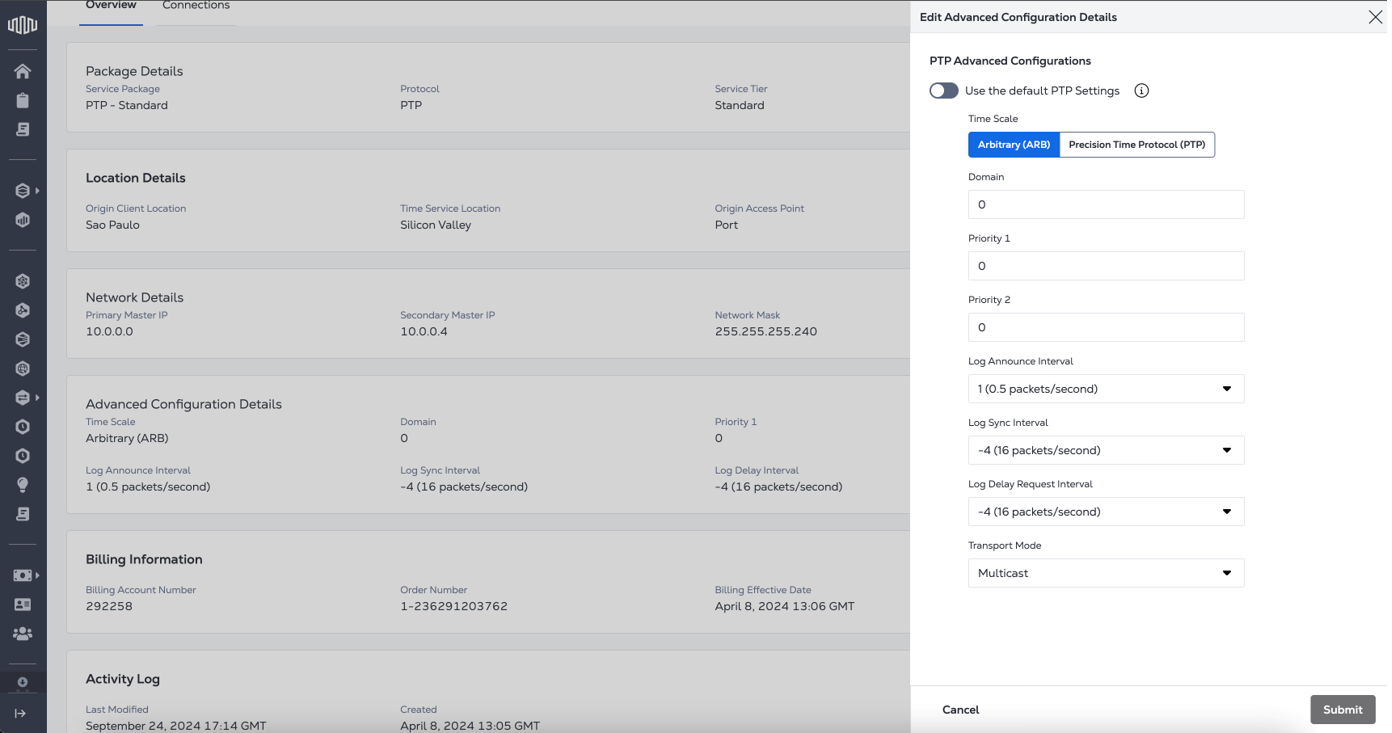
-
Time Scale:
-
ARB – Generates timestamps in UTC format with UTC offset as 0. (This is the default.)
-
PTP – Generates timestamps in TAI format with current UTC offset value.
-
-
Domain – Enter a PTP domain value for the time server. Any clocks that synchronize with this server should be configured with the same domain value. The range is 0 (the default) to 127.
-
Priority 1 and Priority 2 – Enter a value between 0-248. Lower values indicate a higher priority.
-
Log Announce Interval – Choose an option from the drop-down list. This logarithmic value controls the rate of PTP Announce packets from the PTP server. The default is 1, which indicates 1 packet every 2 seconds.
-
Log Sync Interval – Choose an option from the drop-down list. This logarithmic value controls the rate of PTP Sync packets. The default is -4, which indicates 16 packets every second.
-
Log Delay Req Interval – Choose an option from the drop-down list. This logarithmic value controls the rate of PTP DelayReq packets. This setting might also need to be specified on the PTP client. The default is -4, which indicates 16 packets every second.
-
Transport Mode – Choose Multicast (default), Unicast, or Hybrid.
NTP Advanced Configuration Details
Click Edit in the Advanced Configuration Details to add or update keys.
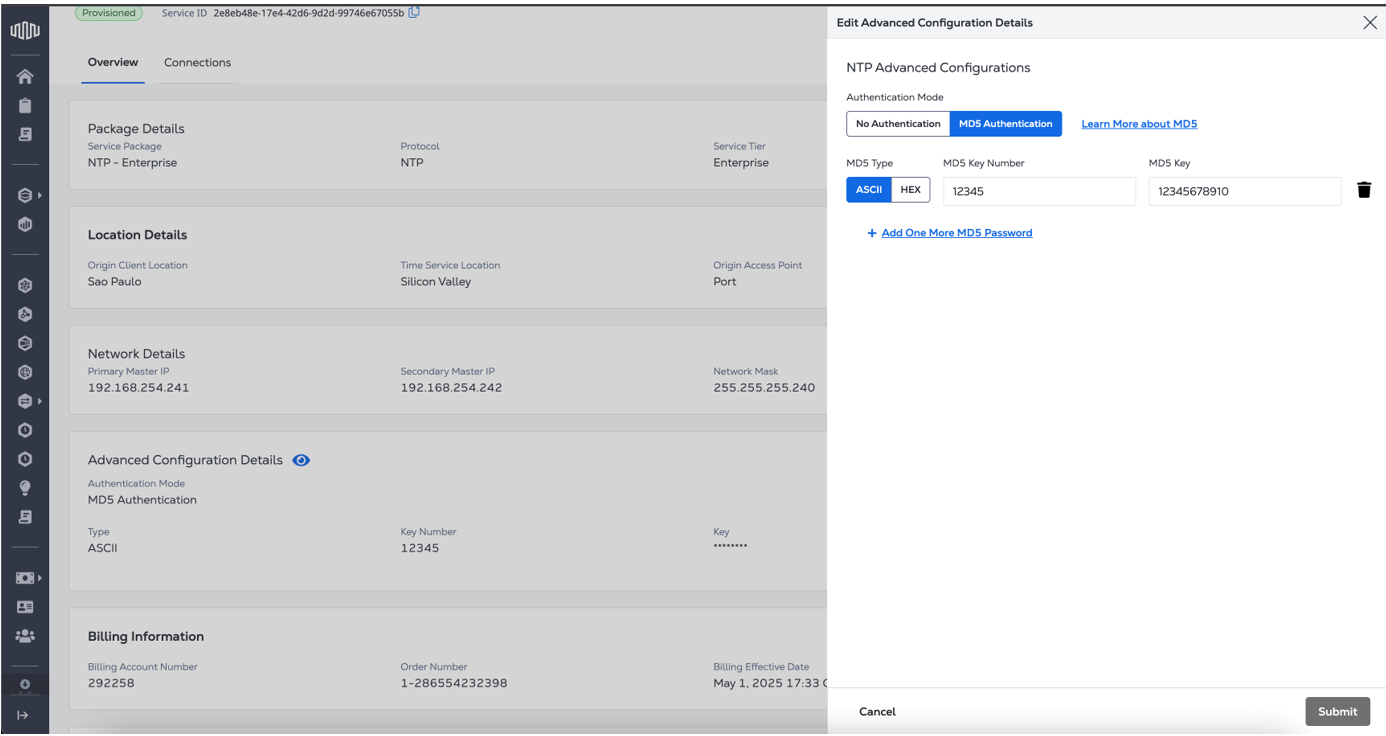
-
MD5 Type – Select the type of key string, ASCII or HEX.
-
MD5 Key Number – Enter the key number. Integers from 1-65535 are valid.
-
MD5 Key – Enter a key that contains 10-40 characters:
Once you have made all your changes, click Submit.
In the Services window, the service order number is updated, and if necessary, the instance is reconfigured and reprovisioned. A notification is displayed on the Services window, and the Status is updated at the top of the Services section.